Weixiao Meng
Sherman
RIS-based Over-the-air Diffractional Channel Coding
Aug 17, 2024



Abstract:Reconfigurable Intelligent Surfaces (RIS) are programmable metasurfaces utilizing sub-wavelength meta-atoms and a controller for precise electromagnetic wave manipulation. This work introduces an innovative channel coding scheme, termed RIS-based diffractional channel coding (DCC), which capitalizes on diffraction between two RIS layers for signal-level encoding. Contrary to traditional methods, DCC expands signal dimensions through diffraction, presenting a novel countermeasure to channel effects. This paper focuses on the operational principles of DCC, including encoder and decoder designs, and explores its possibilities to construct block and trellis codes, demonstrating its potential as both an alternative and a supplementary conventional coding scheme. Key advantages of DCC include eliminating extra power requirements for encoding, achieving computation at the speed of light, and enabling adjustable code distance, making it a progressive solution for efficient wireless communication, particularly in systems with large-scale data or massive MIMO.
RIS-Based On-the-Air Semantic Communications -- a Diffractional Deep Neural Network Approach
Dec 01, 2023Abstract:Semantic communication has gained significant attention recently due to its advantages in achieving higher transmission efficiency by focusing on semantic information instead of bit-level information. However, current AI-based semantic communication methods require digital hardware for implementation. With the rapid advancement on reconfigurable intelligence surfaces (RISs), a new approach called on-the-air diffractional deep neural networks (D$^2$NN) can be utilized to enable semantic communications on the wave domain. This paper proposes a new paradigm of RIS-based on-the-air semantic communications, where the computational process occurs inherently as wireless signals pass through RISs. We present the system model and discuss the data and control flows of this scheme, followed by a performance analysis using image transmission as an example. In comparison to traditional hardware-based approaches, RIS-based semantic communications offer appealing features, such as light-speed computation, low computational power requirements, and the ability to handle multiple tasks simultaneously.
Physical Layer Security Assisted Computation Offloading in Intelligently Connected Vehicle Networks
Mar 25, 2022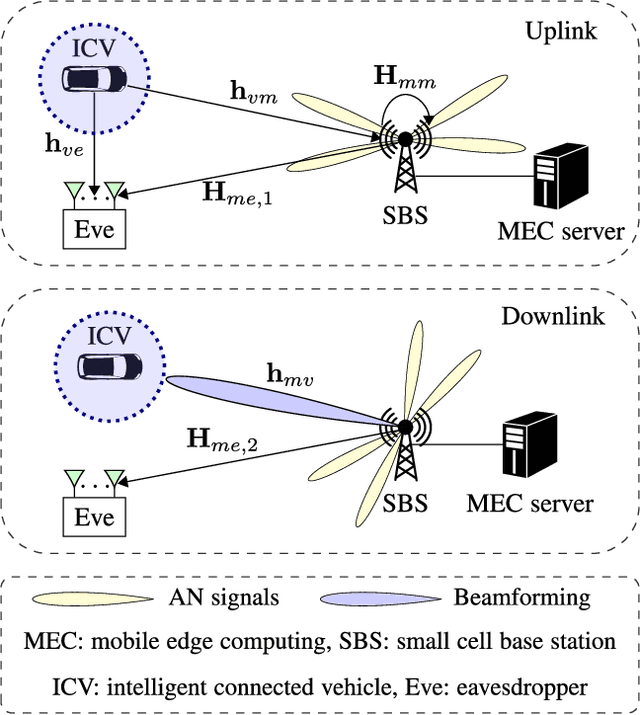
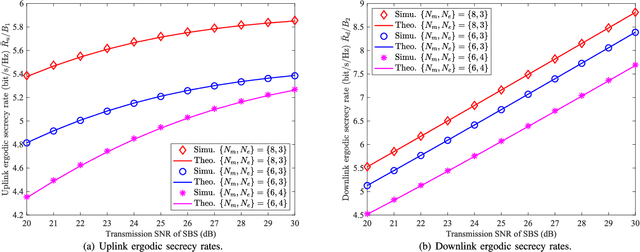
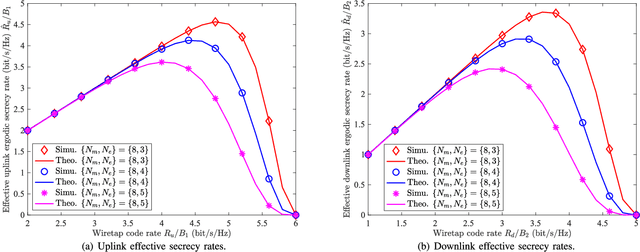
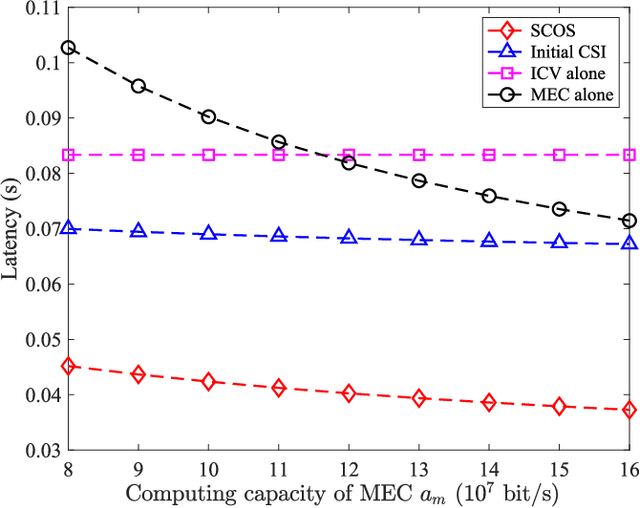
Abstract:In this paper, we propose a secure computation offloading scheme (SCOS) in intelligently connected vehicle (ICV) networks, aiming to minimize overall latency of computing via offloading part of computational tasks to nearby servers in small cell base stations (SBSs), while securing the information delivered during offloading and feedback phases via physical layer security. Existing computation offloading schemes usually neglected time-varying characteristics of channels and their corresponding secrecy rates, resulting in an inappropriate task partition ratio and a large secrecy outage probability. To address these issues, we utilize an ergodic secrecy rate to determine how many tasks are offloaded to the edge, where ergodic secrecy rate represents the average secrecy rate over all realizations in a time-varying wireless channel. Adaptive wiretap code rates are proposed with a secrecy outage constraint to match time-varying wireless channels. In addition, the proposed secure beamforming and artificial noise (AN) schemes can improve the ergodic secrecy rates of uplink and downlink channels even without eavesdropper channel state information (CSI). Numerical results demonstrate that the proposed schemes have a shorter system delay than the strategies neglecting time-varying characteristics.
Video-based Facial Micro-Expression Analysis: A Survey of Datasets, Features and Algorithms
Feb 16, 2022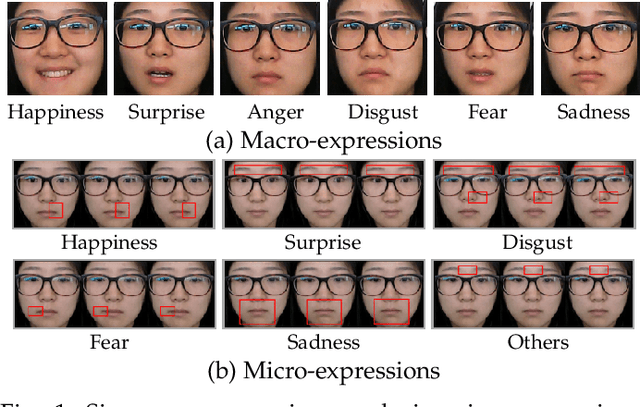
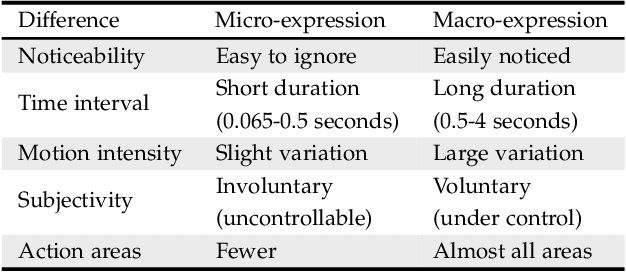
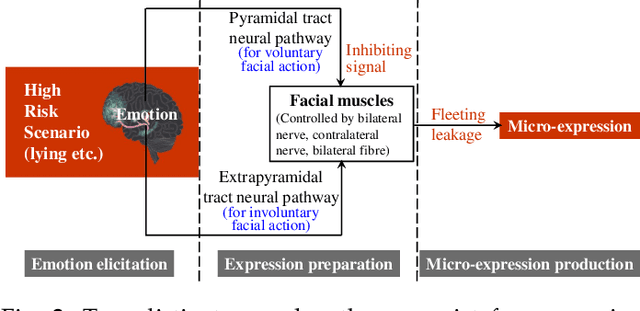
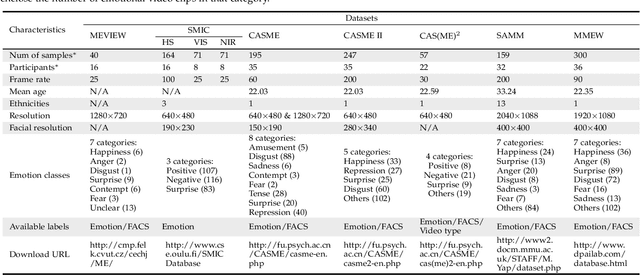
Abstract:Unlike the conventional facial expressions, micro-expressions are involuntary and transient facial expressions capable of revealing the genuine emotions that people attempt to hide. Therefore, they can provide important information in a broad range of applications such as lie detection, criminal detection, etc. Since micro-expressions are transient and of low intensity, however, their detection and recognition is difficult and relies heavily on expert experiences. Due to its intrinsic particularity and complexity, video-based micro-expression analysis is attractive but challenging, and has recently become an active area of research. Although there have been numerous developments in this area, thus far there has been no comprehensive survey that provides researchers with a systematic overview of these developments with a unified evaluation. Accordingly, in this survey paper, we first highlight the key differences between macro- and micro-expressions, then use these differences to guide our research survey of video-based micro-expression analysis in a cascaded structure, encompassing the neuropsychological basis, datasets, features, spotting algorithms, recognition algorithms, applications and evaluation of state-of-the-art approaches. For each aspect, the basic techniques, advanced developments and major challenges are addressed and discussed. Furthermore, after considering the limitations of existing micro-expression datasets, we present and release a new dataset - called micro-and-macro expression warehouse (MMEW) - containing more video samples and more labeled emotion types. We then perform a unified comparison of representative methods on CAS(ME)2 for spotting, and on MMEW and SAMM for recognition, respectively. Finally, some potential future research directions are explored and outlined.
 Add to Chrome
Add to Chrome Add to Firefox
Add to Firefox Add to Edge
Add to Edge